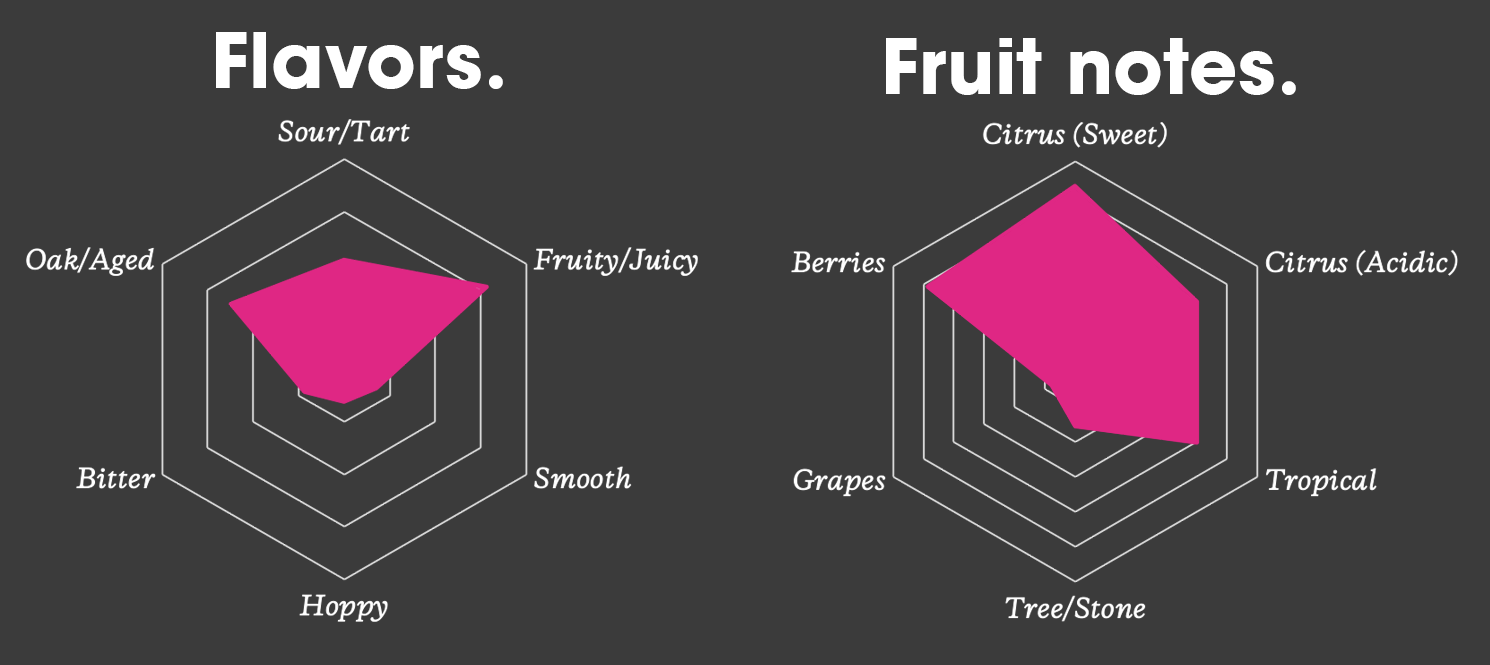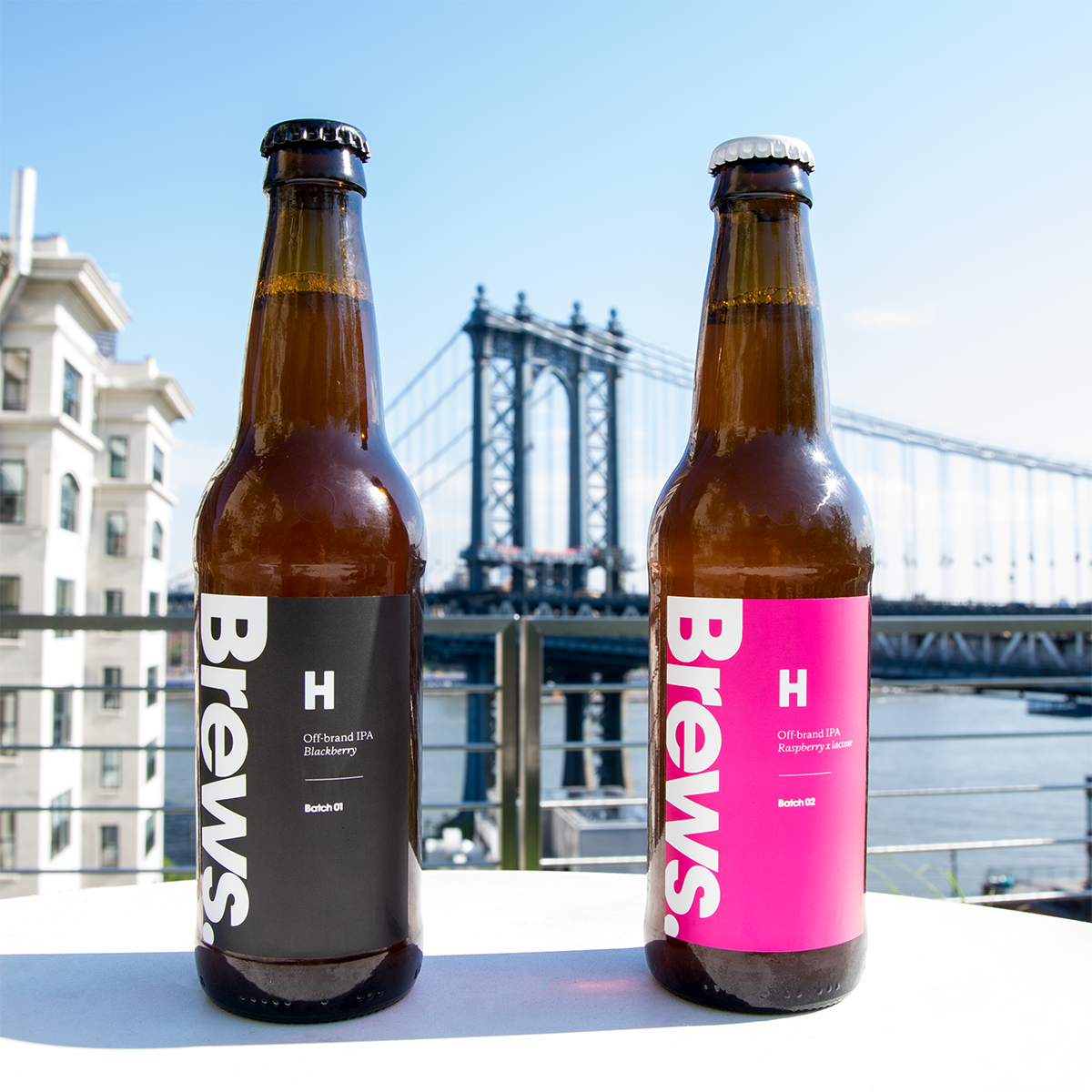Beer plays an important part of employee culture at Huge. So it only made sense for us to brew our own. The catch – it had to be data-informed in order be the objectively best beer for our employees.
Huge Brews.
Beer plays an important part of employee culture at Huge. Our office fridges are stocked with both globally distributed brands and local crafts. Company-wide meetings include multiple ice tubs of bottles and cans. Employees often crack open cold ones when brainstorming strategy. And our kegerator has replaced the water cooler as the jumping-off point for spontaneous collaboration.
For the truly adventurous, Huge is also home to a longstanding social group named Huge Brews, which has existed since 2013. Every Wednesday, Huge Brews hosts its famous “Beer Club”, wherein the goal is to make rare or unique beers more accessible to drinkers of every level, and to discover new favorites. Since its inception, the club has sampled 1,819 individual beers. For each beer, we have an aggregate score based on club votes (on a scale of 1 to 5), which allows us to determine what types of beers our employees prefer, and it provides a macro trend of where the beer category is going as a whole.
Beers have advanced significantly since 2013. Looking back at the start of our historical data, a standard hoppy IPA or pilsner could win the week. However, as more complex ingredients and flavor combinations have been introduced, so too have our palettes advanced. For instance, a sample of victorious brews in 2019 include: a sour ale with fennel pollen, wildflower honey, and milk sugar; a spicy farmhouse ale brewed with 7 types of grains and 7 types of peppercorns; an aged stout with pistachio, cacao nibs, and vanilla; and even an imperial stout brewed with Butterfingers candy.
Another key objective of Huge Brews is to learn about how the brewing process works, and to foster experimentation. In the past, individual members have created and shared “home brews” with the company. However, as our social group matured, we decided that it was time for Huge to have its first official beer.
In conjunction with our spring company event, several Huge Brews faithfuls undertook a passion project to devise a custom recipe and then to partner with local experts at Bitter & Esters in Brooklyn to bring that vision to life.
Our approach.
Within an accelerated 6 week schedule, we integrated the strengths of individuals across multiple disciplines in order to streamline the process. With our Analytics team, we standardized our ratings data in order to determine the core attributes of our “ideal” beer. In conjunction with our creative and branding teams, we designed label for our custom brew and named it.
Our beer.
For the purposes of this endeavor, we considered our past two years of data (408 beers total), in order to account for changes in employee preferences. Based on our ratings data, we determined that our favorite type of beer is a juicy IPA (India pale ale) with notes of sour fruit.

“You are the first customers to send us data visualizations. They were fancy.” -Jack Misner of Bitter & Esters
A common issue we encounter whenever buying or tasting beers is that brewery descriptions are not always qualitatively substantive (or even provided, in some cases). To reinforce our data integrity, we layered in text classifications based on online user reviews from two different UGC databases. We also leveraged wine aroma charts to inform how these descriptors would be grouped, in terms of tasting notes and fruit flavors.
With all this data, we were able to determine:
- the body of our beer
- preferred tasting notes
- types of fruit to include
- the color (based on the Standard Reference Method scale)
- the desired turbidity (opacity)
- the desired alcohol by volume (ABV)
The result was the Huge Brews Off-brand IPA. It is a smooth-tasting juicy IPA with a slight tartness and notes of citrus. It clocks in at 5.9% ABV.
However, we were not content with just the base. We created two variations with the most highly rated fruits – one with blackberry, and one with raspberry and lactose (milk sugar).
What we learned.
Taste is very subjective, but starting with data is always a good way to inform our choices. For years, we kept track of beer scores out of habit, without actioning on them in any meaningful way. It seemed a fortunate happenstance that we were able to use our troves of data in creating our beer. As Jack Misner of Bitter & Esters told us, “The one thing we try to instill in our customers is that note taking is the single greatest tool you can use to improve your beer brewing.”
We also learned that data quality is paramount for gleaning meaningful insights. We had to undertake the task of standardizing brewery and beer names on our lists (e.g. is it “Other Half” or “Other Half Brewing” or “Other Half Brewery”?). This goes doubly so with user-generated content. Misspellings were common, so we had to modify a lot of our text classification logic in order to factor these in.
Physical packaging also brought its own unique challenges. We had to design and produce labels for bottles that would likely change temperature and accumulate condensation. Since this was an internal product not for sale, we had some leeway with our branding; however, along the way, we did learn a lot about design standards for beer (regulated by the TTB rather than FDA).


